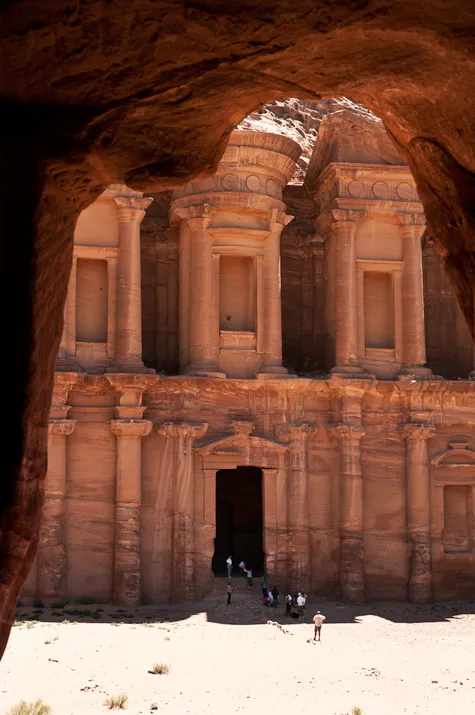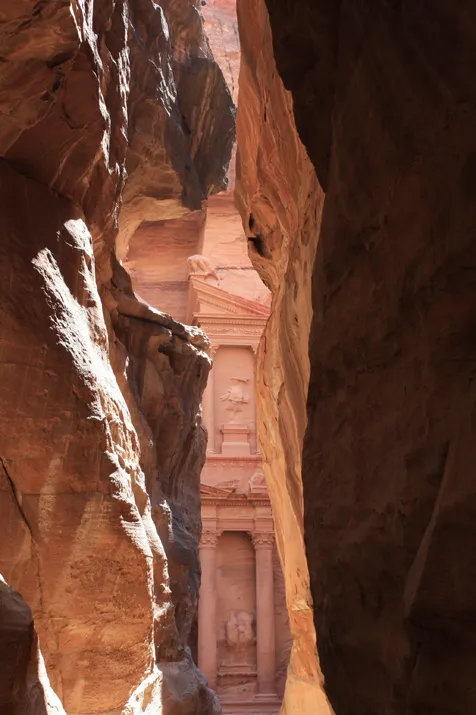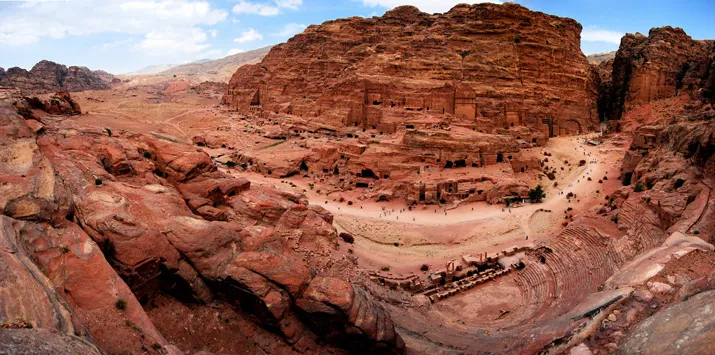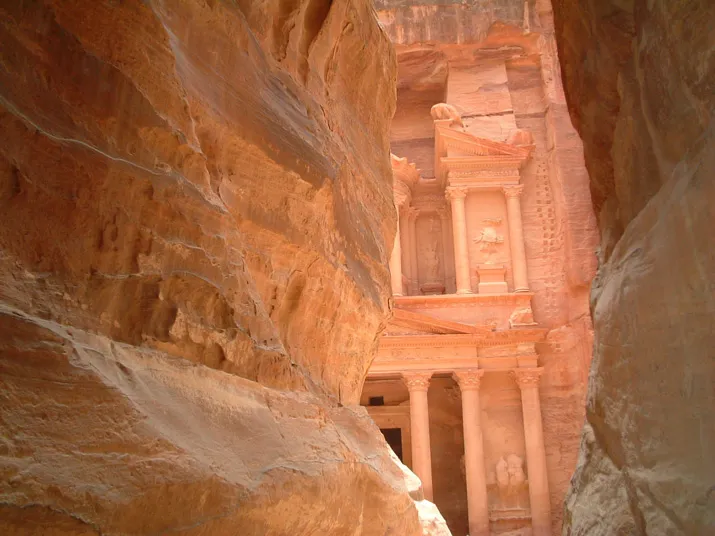Guarding Petra
Balancing tourist access and the preservation of the sandstone city may be a tough call
/https://tf-cmsv2-smithsonianmag-media.s3.amazonaws.com/filer/lifelist-petra-631.jpg)
"Petra" is the Greek word for "rock." But the Arabic term, al-madina al-ward ah (rose-colored city), far better evokes the beauty of this enigmatic site.
Located in western Jordan, Petra was built in the first century B.C. by an Arab tribe, the Nabateans, who made it the capital of a prosperous mercantile empire. High walls and surrounding mountains served as intimidating defenses against raiders tempted to plunder the city's wealth. The main entrance, the Siq, is a twisting gorge so narrow in some places that only two camels can pass at a time.
Today, as then, visitors approaching through the Siq suddenly behold a stunning metropolis carved from sandstone. One of the first sights is Petra's most recognizable building, Al Khazneh, commonly called "the Treasury" (although it is, in fact, believed to be a large tomb).
The city remained well preserved largely because it was forgotten. Petra fell into decline following earthquakes in the fourth and sixth centuries A.D. It was not even on Western maps until it was rediscovered in 1812 by the Swiss traveler Johann Ludwig Burckhardt.
Nowadays, Petra once again bustles with human activity. Tourists began flocking there in greater numbers after it was featured in the 1989 film Indiana Jones and the Last Crusade. With up to 5,000 visitors a day to the site, some people—among them Jane Taylor, who has photographed Petra for more than 20 years—worry that it could become endangered, possibly prompting restrictions on access. "One of the beauties of Petra," she explains, "has been our freedom to climb wherever we want."
Planning Your Next Trip?
Explore great travel deals
Smithsonian magazine participates in affiliate link advertising programs. If you purchase an item through these links, we receive a commission.




